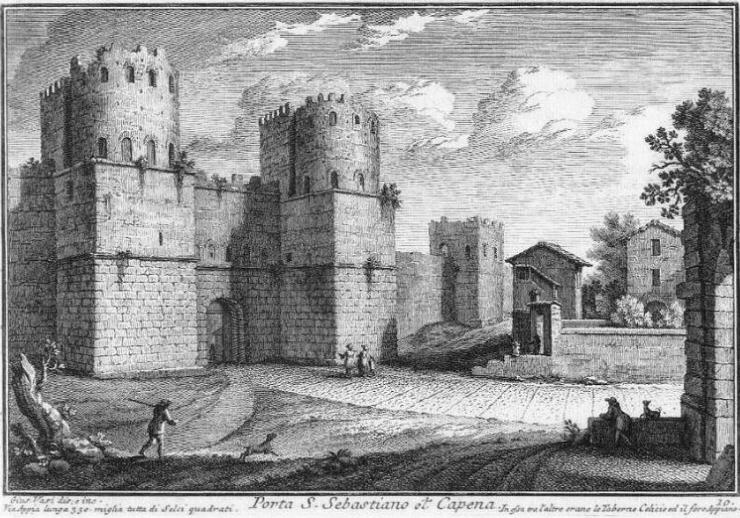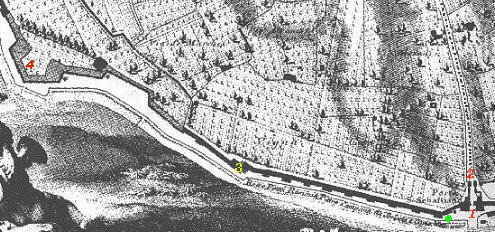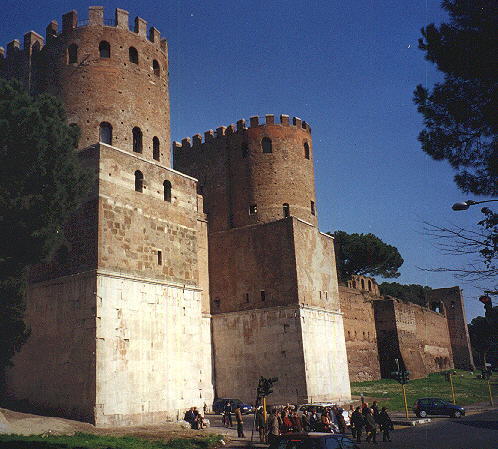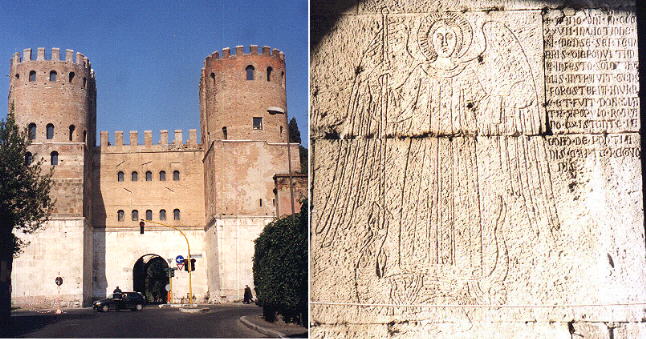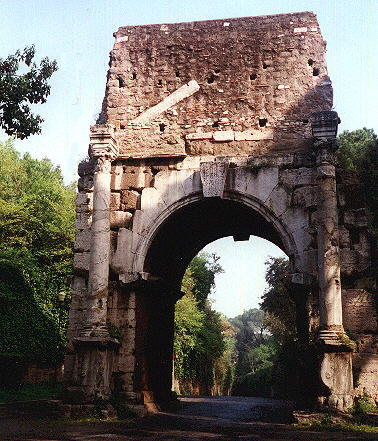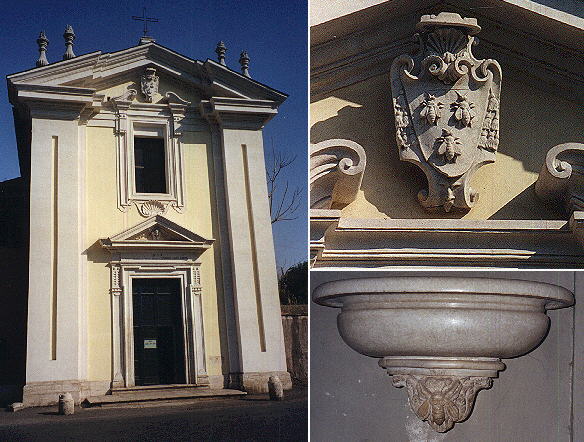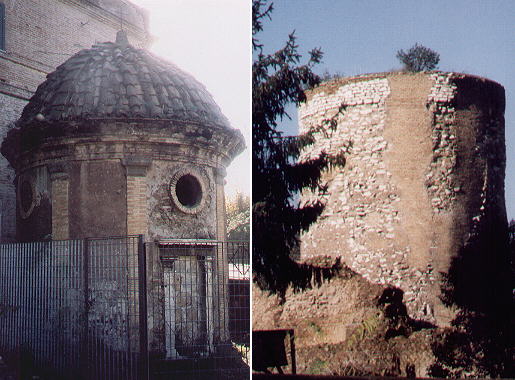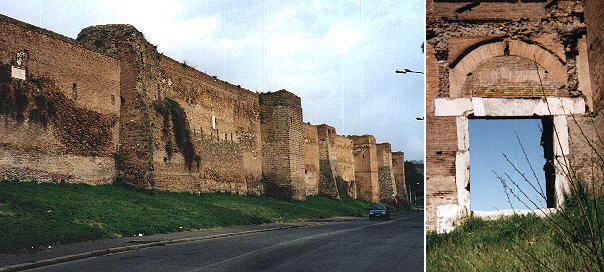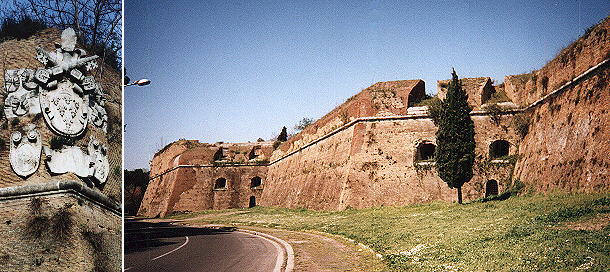  Porta S. Sebastiano (Book 1) (Map A4) (Day 5) (View C11) (Rione Ripa) and (Rione Campitelli) In this page:
Porta Capena the gate of the Republican walls from which Via Appia
started was located at the end of the Circus Maximus between Celio and
Aventino. The new gate built by Aurelianus to the south east of Porta Capena
in order to include Caracalla's Baths in the walls, retained the name of
Porta Capena, but was more commonly called Porta Appia and later on got
the name of Porta S. Sebastiano after the (relatively) close Basilica.
The view is taken from the green dot in the small 1748 map here below which shows: 1) Porta S. Sebastiano;
2) Arco di Druso; 3) Porta Ardeatina; 4) Bastione del Sangallo.
The dotted line in the small map delineates the border between Rione Ripa (left) and Rione Campitelli (right).
The gate was rebuilt by Belisarius and Narsete who reinforced it with high towers built using the marble of the tombs along Via Appia. Inside the gate there is an interesting medieval relief celebrating the defeat of Robert I, King of Naples who in 1327 vainly attempted to conquer Rome (in that period the popes were in Avignon).
Via Appia was very often the scene of a triumph in honour of a victorious emperor returning to Rome from the eastern provinces of the empire. The remains of a triumphal arch erected near Porta S. Sebastiano are traditionally called Arch of Drusus, although the reference to the son of Tiberius is not supported by evidence. The arch became part of the aqueduct bringing water to the Baths of Caracalla.
The chapel was built in the XVIIth century by Cardinal Barberini
on the site where St. Peter, fleeing from Rome by Via Appia, met his Master and enquired
of him "Domine quo vadis?" (Lord, where are you going?) to which he received
the reply "Venio iterum crufigi" (I go to get to crucified again). Cappella di Reginald Pole and Tomba di Priscilla
A small chapel was built by Cardinal Reginald Pole on the site where in 1539 he escaped an assassination attempt
ordered by Henry VIII of England. The use of brickwork is consistent with the many Roman monuments existing
in the area in particular the nearby Sepolcro di Annia Regillia. The Walls between Porta S. Sebastiano and Porta S. Paolo
The walk along this section of the walls is very interesting and offers great views: the walls are south facing and not overwhelmed by nearby buildings. Near Via Cristoforo Colombo there is one of the smaller gates which was opened from time to time. This gate was called Porta Ardeatina. Bastione del Sangallo
The Sack of Rome in 1527 by the German mercenary troops of Charles
V led the Popes to worry about the defence of Rome. The Aurelian walls
not only were ruined in many points but were built before the use of gunpowder
and artillery. Paulus III entrusted Antonio da Sangallo the Younger with
the task of modernizing the walls of Rome. Sangallo built a large bastion
commanding both Via Appia and Via Ostiense, but the cost was such that
Paulus III gave up the project.
Next plate in Book 1: Porta S. Paolo Next plate in Day 5 itinerary Basilica di S. Sebastiano fuori delle mura Next step in your tour of Rione Campitelli: Chiesa di S. Sisto Vecchio Next step in your tour of Rione Ripa: Porta S. Paolo
Go
to |
All images © 1999 - 2003 by Roberto Piperno. Write to romapip@quipo.it
